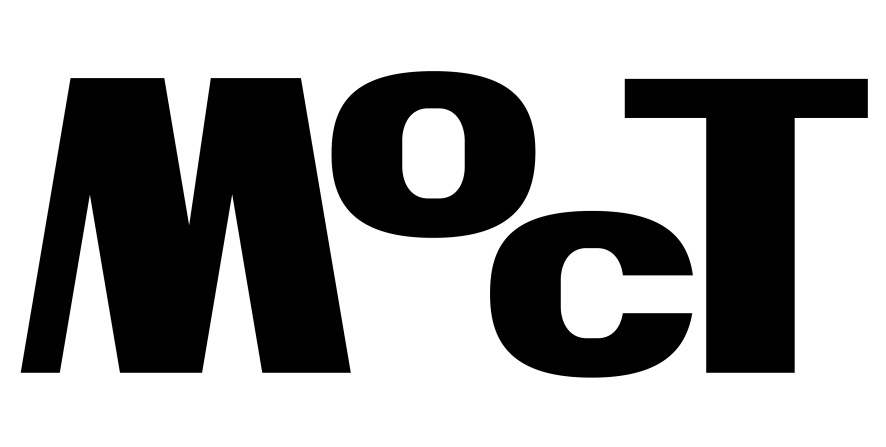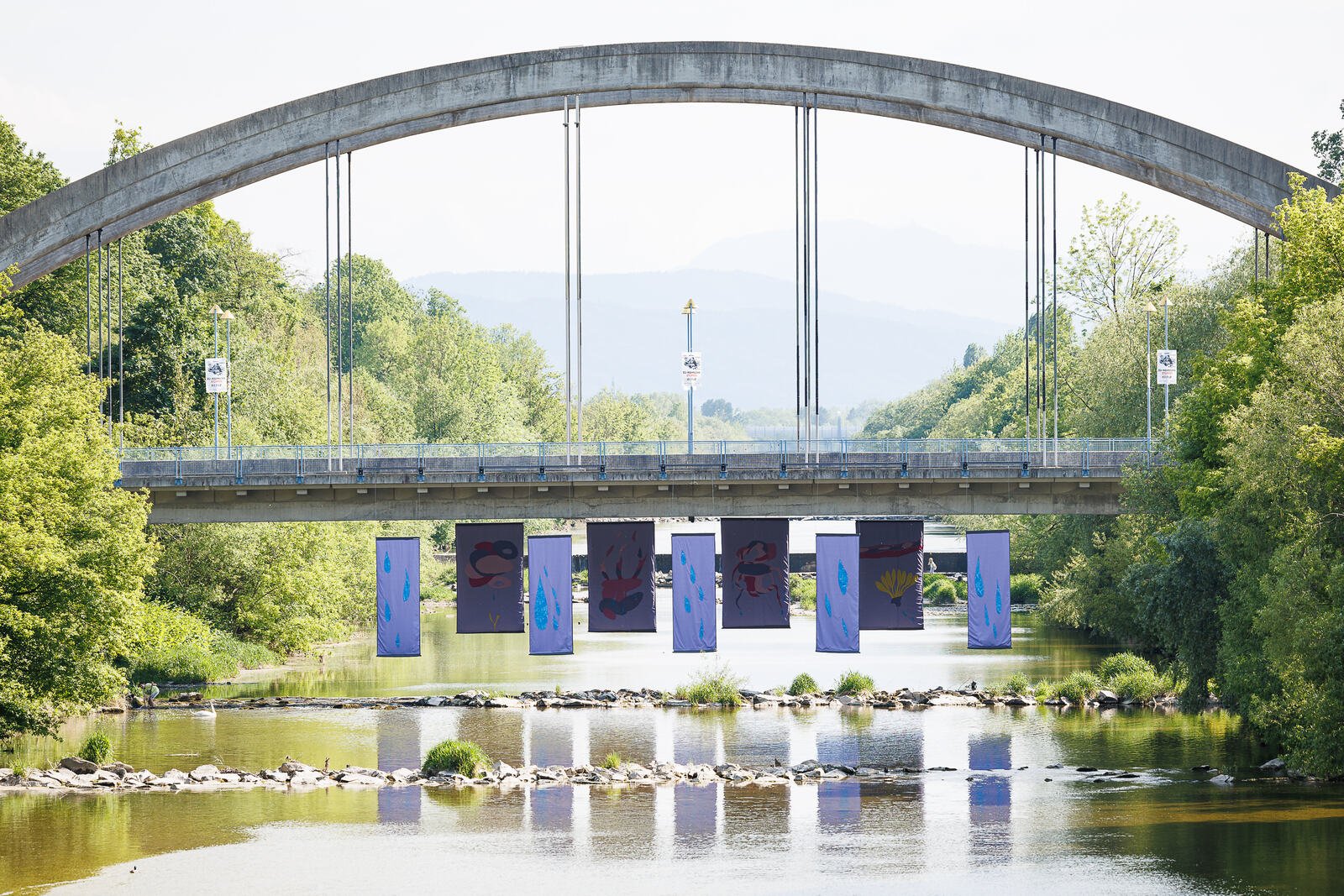Vera Zalutskaya
The Way of the Water, curated by Joanna Warsza and Lorena Moreno Vera as part of the Tangente festival, focuses on the Traisen River, a right tributary of the Danube, and the Mühlbach millrace in Sankt Pölten, a relatively small town in Lower Austria. The Traisen River is currently used to operate several hydroelectric power plants. In 1976, during the construction of the hydroelectric dam, the river’s mouth was moved eight kilometers to the east, and its lower course was re-routed through a 12.5-kilometer-long artificial channel. This type of intervention has disrupted the natural functioning of the river, which has led to repeated flooding and other environmental problems.
The historical and the present life of the river and its surroundings are the key context of the exhibition, whose works comment on the local reality in various ways. Visitors learn about it by moving from one work to the other. Despite the compact size of St. Pölten, the artworks are spread so widely that it takes at least one whole day to see them all, on foot or by bicycle. However, thanks to the slow rhythm of the city’s life, the beautiful views of the mountains and the lush greenery, this trek becomes very pleasant, almost meditative. It offers an opportunity to learn about the urban planning, the architecture, and the history of this place.


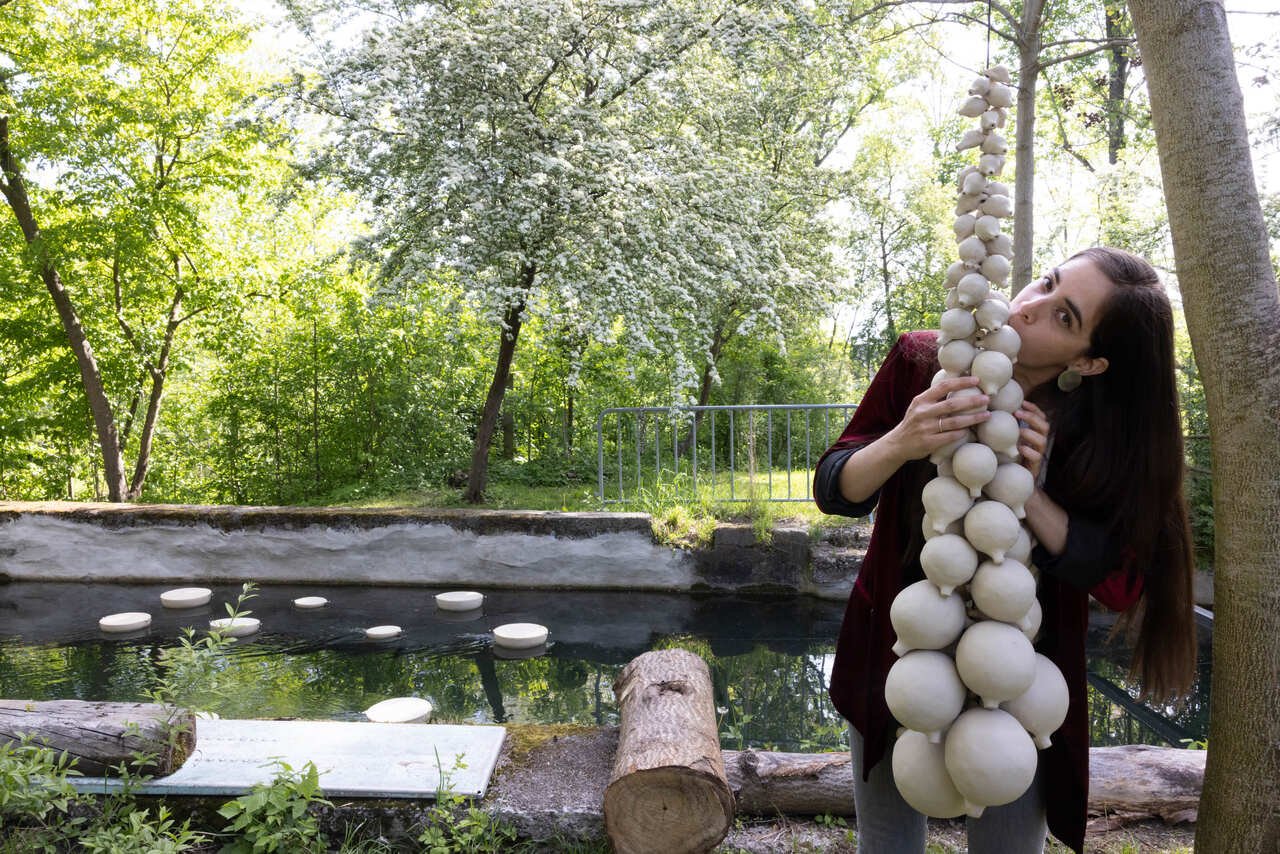

The exhibition has been structured in such a way that visitors can start at any point and experience “art parcours”[1] – following artworks and narratives that enter into a “conversation with the River Traisen and Mühlbach,”[2] as well as with each other. In this way, the effect of putting the river in the center instead of treating it merely as a background, has been achieved. Such an approach is particularly reflected in Regina Hügli’s subtle work Traisen She/Her, which is presented on the pages of the exhibition catalog.[3] The artist created a subjective portrait of the river and its industrial canals by documenting the complex interactions between nature, people, and infrastructure. Her photographs, while seemingly idyllic at first glance, hide tiny traces of the difficult processes of industrialization, as well as attempts to renaturalize the surrounding landscape. For example, some frames capture the remains of plants left behind on trees submerged in recent floods, or rubber gloves lying in the dry riverbed that were used during the cleaning of the Mühlbach.
One of the project’s inspirations was Astrida Neimanis’ concept of Hydrofeminism, which conceives the water as a body in constant motion, connecting all living beings, spaces and histories.[4] In the spirit of this theory, Neonpink Collective combined the history of the river with that of local women in the multimedia project Mühlbacherinnen, specifically rediscovering and partly renovating the wooden platforms formerly used for laundry and creating a soundtrack that one can listen to while walking along the river. The partly documentary, partly fictional composition consists of the untold stories of women from the area who carried out the arduous physical labor of washing laundry along the Mühlbach canal.
The story of the women who were connected to the town of St. Pölten is continued by Elisabeth von Samsonow, who combined their histories with the history of industrialization and the exploitation of natural resources. The artist placed Steam Diver – an electrokinetic sculpture – near the city’s small hydroelectric plant Hammerwerk. The metal structure, which rotates on its axis and is powered by a specially made spiral placed in the water, is topped by an aluminum copy of the portrait bust of Thea Voith. It is known that Thea Voith – the wife of Walther Voith, a significant figure in the proliferation of the German turbine industry – was interested in occult knowledge and also organized spiritualist séances in St. Pölten. Samsonow’s work combines the presumed rationality of science with the mystical symbolism of water, recalling the common roots of magical and technological experiments, and emphasizing the need for enriching contemporary scientific knowledge with ecological and feminist sensibilities.
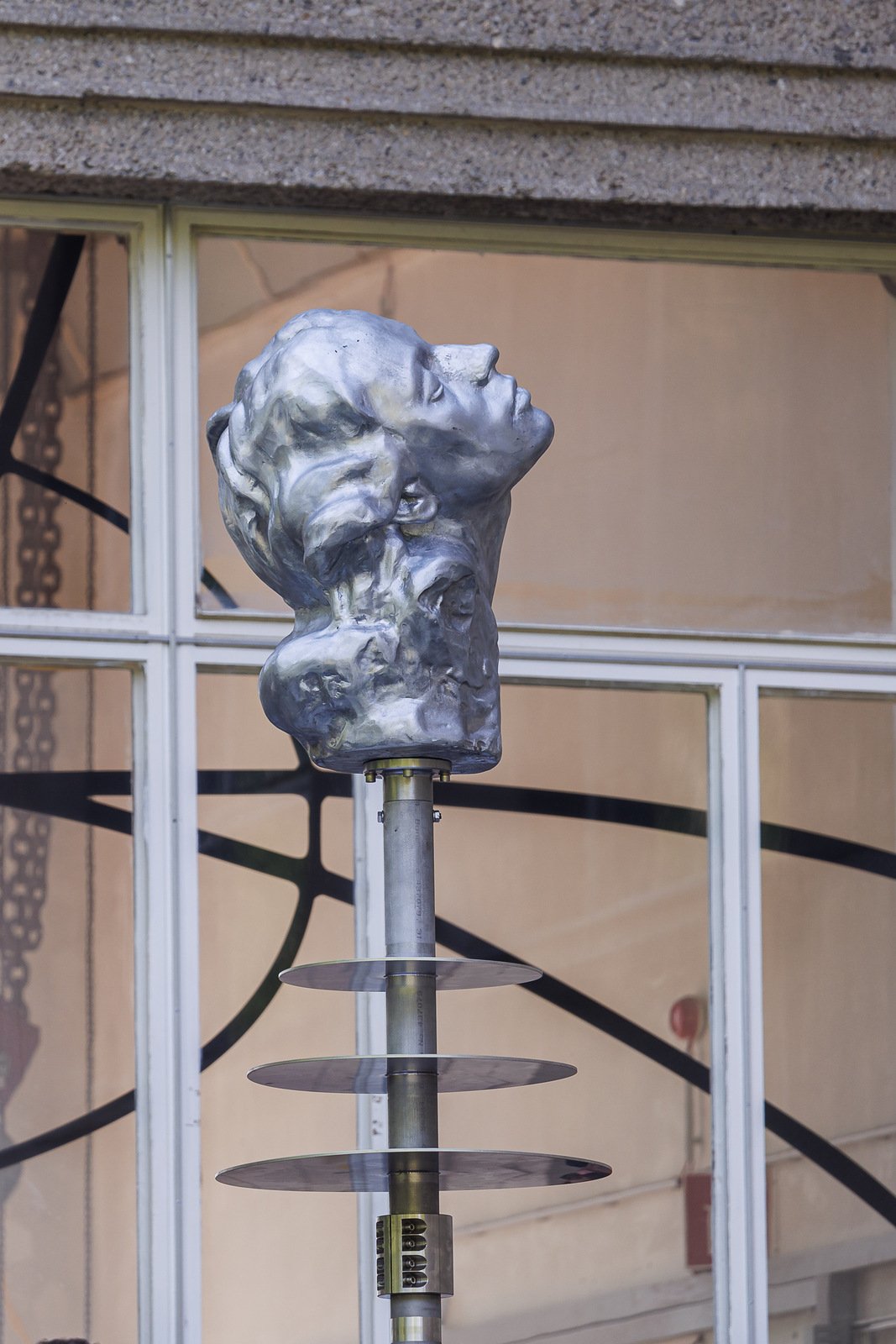

The need for a paradigm shift in the future of technology and industry stems from the fact that the Western capitalist ways of thinking about human existence in the world, focused on continuous development, achieving goals, effects, and profits, has clearly failed. It has brought us to the point where we are today, which is on the threshold of climate catastrophe. As artist and researcher James Bridle points out in their latest book, “If we are to address the wholesale despoliation of the planet, and our growing helplessness in the face of vast computational power, then we must find ways to reconcile our technological prowess and sense of human uniqueness with an earthy sensibility and an attentiveness to the interconnectedness of all things. We must learn to live with the world, rather than seek to dominate it. In short, we must discover an ecology of technology.”[5]
In the spirit of Bridle, artist and environmentalist Christina Gruber created the site-specific work Huchenhochzeit (The Danube Salmon’s Wedding). The sound installation, located on the Rotary Bridge, consists of recordings of the underwater world of the Traisen, and interviews with local experts and river enthusiasts Gregor Gravogl, Gertrud Haidvogl, and Gunter Unfer. The resulting Fishy Podcasts[6] are devoted to the history and future of the Danube salmon (Huchen), and the question of whether the Traisen can become their home again: the species is currently threatened with extinction due in part to human interference, such as the construction of thresholds that block the free movement of the fish. The problem, despite extensive revitalization efforts as part of a LIFE+ project co-funded by the EU and Verbund AG, operator of the Altenwörth hydroelectric plant, still remains unresolved.


Restoring nature’s equilibrium proves much more difficult and costly than destroying it – and at this point, may even be impossible. Katarina Pirak Sikku, a Sámi artist from the Norrbotten region of northern Sweden, highlights the destructive impact of hydroelectric power stations not only on the environment, but also on indigenous peoples. For the Sámi people, “the river is not a resource to exploit but an unstoppable living force.”[7] Her drawings titled Julevadno (meaning “the one who lives in the East” according to the directions set by the movement of water in Sámi tradition), include maps through which the artist seeks not only to preserve elements of her people’s culture and memory, but also to express disapproval for the exploitation of the rivers. Radical interference with water flow, carried out under the pretext of renewable energy development, is not in line with the will of the people, who for centuries have lived in harmony with the river and its natural cycle. In response to the problems addressed by Pirak Sikku, the Polish artist Cecylia Malik proposes giving legal personhood to all the world’s rivers to protect water resources. In St. Pölten, Malik presented the installation Rising Rivers, consisting of 80 plaques with the names of rivers important to the artists and organizers of Tangente festival, paying tribute not only to these rivers, but also to all the rivers, which form an interconnected system across the globe.
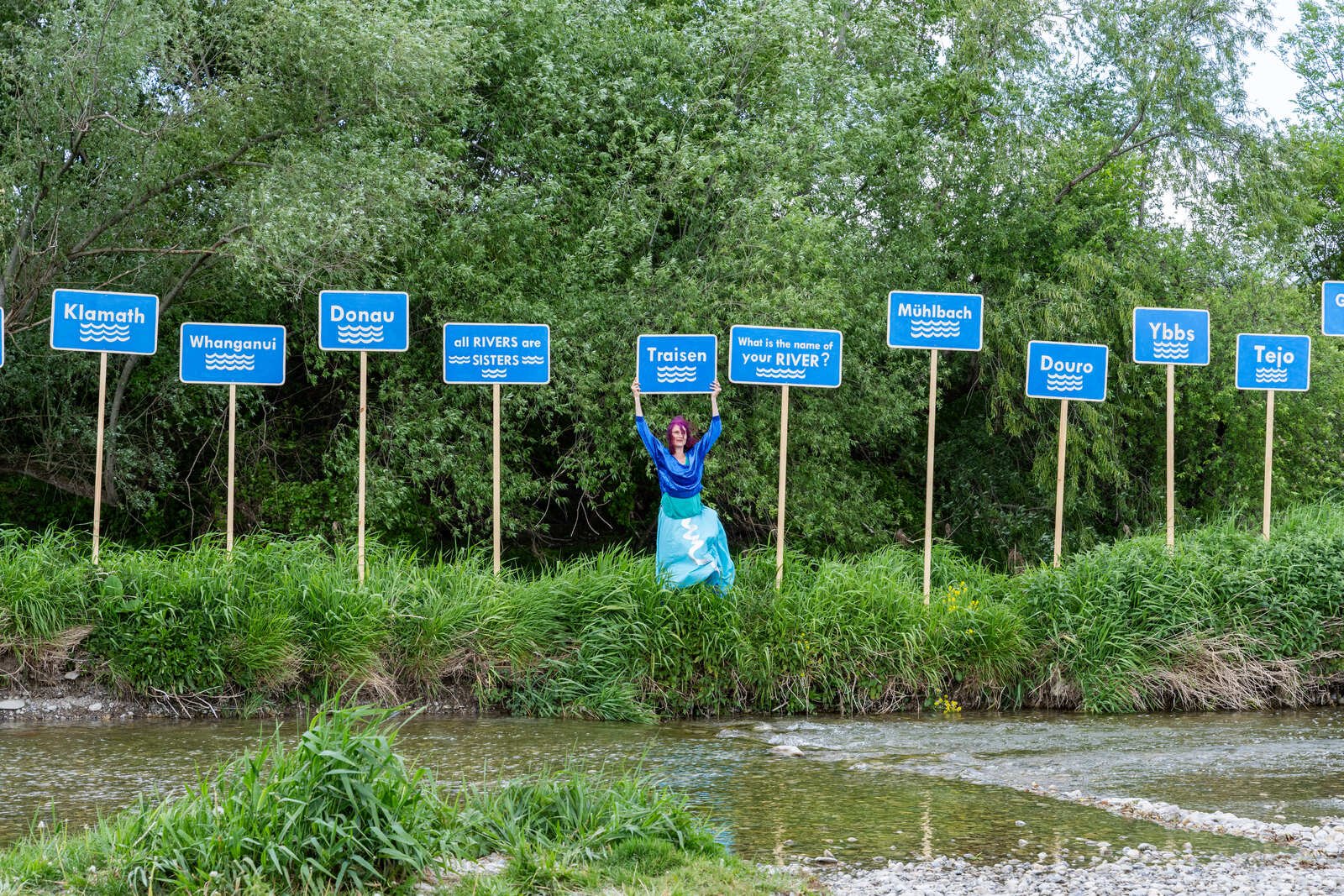
While visiting the exhibition I was accompanied by the feeling of a strange kind of melancholy, which I could describe using the term solastalgia, an emotional or existential anxiety caused by environmental changes. Seemingly everything was in its place: the art, the animals encountered along the way (I saw an otter swimming in the city river!), the picturesque view of the Alps – but it was this false harmony that heightened the feeling of helplessness and uncertainty about what exactly can be done to remedy the current situation of the planet.
Anxieties are reflected in an odor intervention by Sissel Tolaas entitled Fear of Smell / Smell of Fear _12_24. Tolaas collected sweat samples from men experiencing fear and created a perfume out of it. It was then applied to columns supporting the structure of one of Lower Austria’s government buildings. To smell the fragrance composition, visitors had to put on fisherman’s shoes, step into the fountain surrounding the columns and touch them – the scent was released only after contact between the body and the column – which created a sense of intimacy in the experience. For Tolaas, releasing body odors, which society carefully masks with deodorants and cosmetics in daily life, is a political gesture. However, in this second decade of the 21st century we have far too many reasons to feel fear, and I’m not sure if climate change was the specific fear of the men who were sampled.


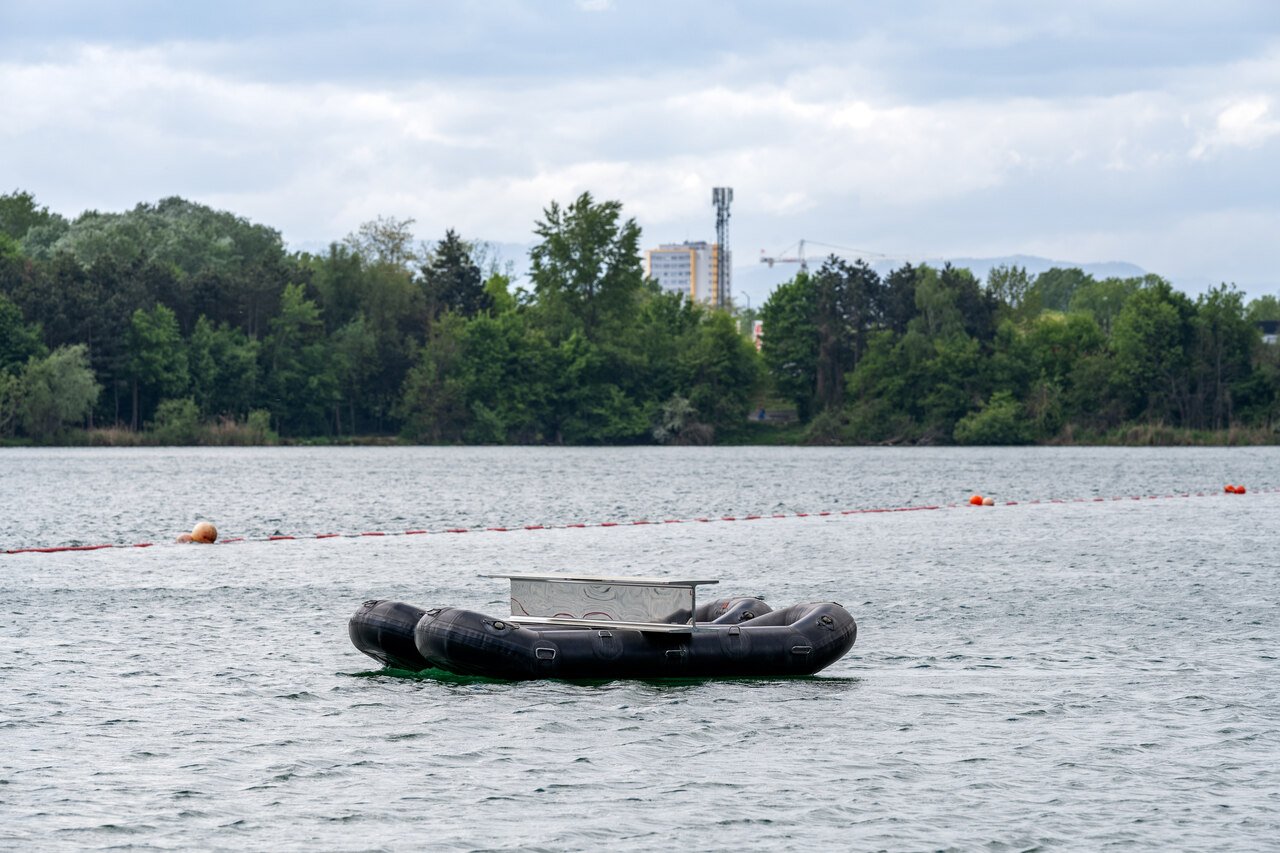
Like the work of Tolaas, some of the pieces have been displayed in places that are not the most obvious, but nevertheless significant to European geopolitics and the history of industrialization. Another example is Amanda Pina’s performative installation To Bloom () Florecimiento, created from flowers placed under the Westbahn bridge, which supports one of Austria’s main highways, the West Autobahn. Two Friends, an installation by Eva Grubinger and Werner Feiersinger, first shown on the Danube River in 2010, was placed on the Großer Viehofner lake for its current iteration. Originally telling the story of a friendship between two artists, this minimalist, conceptual work changed its meaning when it was set in a new context. The lake, which is part of a large recreational area, hides a grisly history. Between 1944 and 1945, two Nazi labor camps operated here: one for Hungarian Jews and the other for non-Jews, the so-called Ostarbeiter. It was here that sand was mined for later processing into gravel, which started the process of industrial change for the Traisen River ecosystem. In this context, Two Friends took on added significance, highlighting the inextricable link between the capitalist idea of perpetual modernization and the justification of extreme exploitation of people and natural resources.
The need not only for a radical change in paradigms of thinking, but also in patterns of action is signaled in another group of works. A native of San Juan Comalapa, Edgar Calel, draws on the methods of measuring time used by his Mayan ancestors. Their calendar, based on observations of celestial bodies, life, and water cycles, was 260 days long and divided into 13 months. Saqb’äch (Rain with Hail) links the ritual of abundance and health for the Traisen River, created on the basis of this calendar, to the vessel made of mud mixed with dried straw in the adobe technique, which Calel put at the bank of the river. The vessel served as an additional reservoir for rainwater, maintaining the natural cycle: once saturated with water it will dissolve and its material will return to the soil.


The Way of the Water is an attempt to follow the hard-to-incorporate ideas of caring for the environment alongside the coexistence of people around and in cooperation with nature. Placed in the greenhouse space of the Mevlana Mosque, Never Give Up The Fruit by Slavs and Tatars consists of blown-glass lamps in the shape of watermelons. Originally native to Africa, the watermelon served humans by being a fruit that stores water in its flesh, becoming a lifesaver during periods of time when other sources of liquid were unavailable. In time, the fruit spread to the Middle East and Europe. And in even more recent years, the fruit has become a symbol of resistance and solidarity with Ukraine (the symbol of the liberation of Kherson) and Palestine (the fruit bearing the same colors as the Palestinian flag).
Alongside the glass objects there are artworks created by participants of a several-month workshop led by Clara Laila Abid Alsstar. During the meetings, they discussed topics related to young Muslims’ relationships with water and the various meanings attributed to it. The result of the workshop is a multimedia installation that includes, among other things, ceramic vessels made by the participants, which has been on view in the private space of this mosque for almost half a year. The very fact that the Muslim community here opened its doors to artists and visitors for several months demonstrates the unique ability of artists to establish dialogue and go beyond common patterns of practice; the aforementioned works are the example of creating new alliances and cooperations.

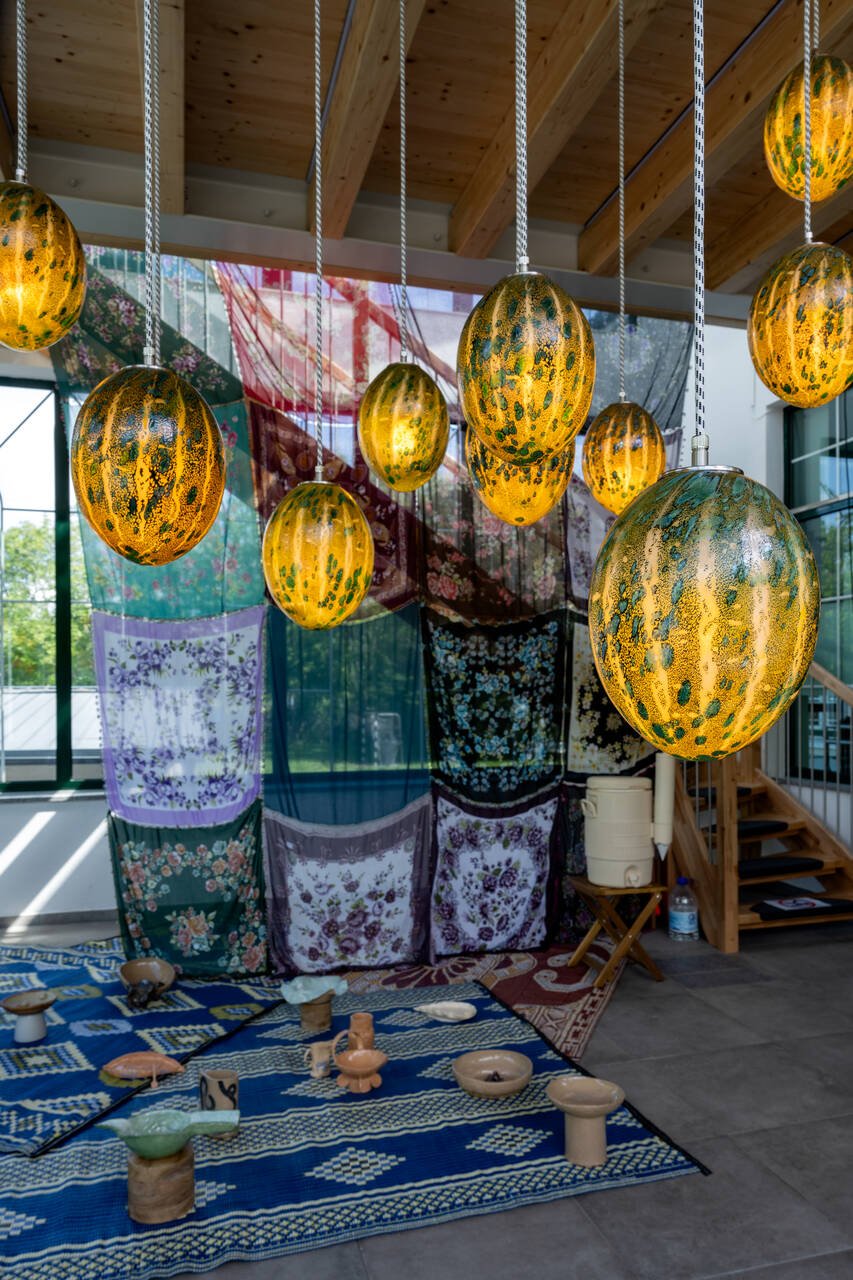
I would like to conclude by mentioning the video work The Ship of Fools by Javier Téllez, created in collaboration with people undergoing psychiatric treatment. The film recreates Hieronymus Bosch’s work of the same name, from about 1490-1500. The Ship of Fools is an allegory described in Sebastian Brant’s satirical poems published in 1494, in which fools steer a ship in search of Narragonia, or “the fool’s paradise.” The story can be seen as an allusion to the present day, named by James Bridle as the “New Dark Age”[8] because of the ever-deepening confusion, speculation, and misinformation we constantly encounter online and in social media. It is becoming more and more difficult for us to build bonds, stand in solidarity, express empathy, and open up to the unknown. We may see the unknown as a danger so threatening that it is impossible to imagine, or as a potential that encourages us to explore new ways of thinking and doing things. I leave it to readers to consider whether they want to see foolishness as a metaphor for human vulnerability to capitalism’s manipulations, or rather as not giving up on belief in the possibility of building a better future.
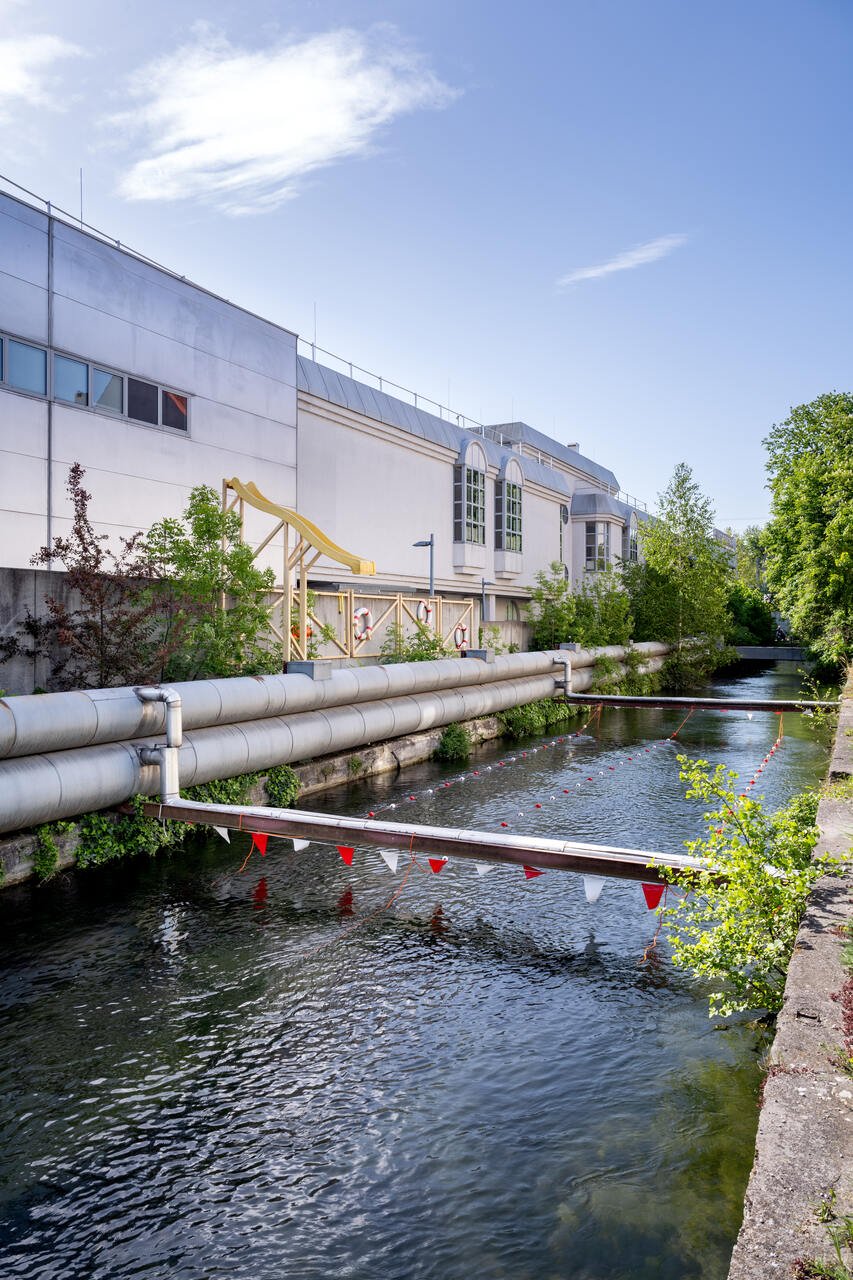

[1] Joanna Warsza, Lorena Moreno Vera, Verena Schaffer, The Way of the Water. An Art Parcours in Conversation with the River Traisen and the Mühlbach, VfmK Verlag fur modern Kunst GmbH, Vienna, 2024
[2] Ibid
[3] Ibid
[4] Astrida Neimanis, We Are All Bodies of Water, at: Joanna Warsza, Lorena Moreno Vera, Verena Schaffer, The Way of the Water. An art Parcours in Conversation with the River Traisen and the Mühlbach, VfmK Verlag fur modern Kunst GmbH, Vienna, 2024, p. 286-297
[5] James Bridle, Ways of Being, Animals, Plants, Machines: The Search for a Planetary Intelligence, Penguin Books, 2022, p.13
[6] Fishy Podcasts are available for listening here: https://www.tangente-st-poelten.at/en/kunstparcours/christina-gruber
[7] Joanna Warsza, Lorena Moreno Vera, Verena Schaffer, The Way of the Water. An Art Parcours in Conversation with the River Traisen and the Mühlbach, VfmK Verlag fur modern Kunst GmbH, Vienna, 2024, p. 187
[8] James Bridle, New Dark Age: Technology and the End of the Future, Verso Books, 2023
Artist(s): Amanda Piña, Cecylia Malik, Christina Gruber, Clara Laila Abid Alsstar, Edgar Calel, Regina Hügli, Rita Fischer, Roberta Lazo Valenzuela, Sissel Tolaas, Slavs & Tatars, Sophie Utikal, Elisabeth von Samsonow, Eva Grubinger & Werner Feiersinger, Hélène Meyer & Filip Van Dingenen, Javier Téllez, Jimena Croceri, Katarina Pirak Sikku, Klara Hobza, Lisa Tan, Lisa Truttmann, Kollektiv Neonpink, Paola Torres Núñez del Prado, Rainer Prohaska, Ursula K. Le Guin
Exhibition Title: The Way of the Water
Venue: Tangente St.Pölten
Place (Country/Location): Sankt Pölten, Austria
Dates: 1.05.–06.10.2024
Curated by: Joanna Warsza, Lorena Moreno Vera
